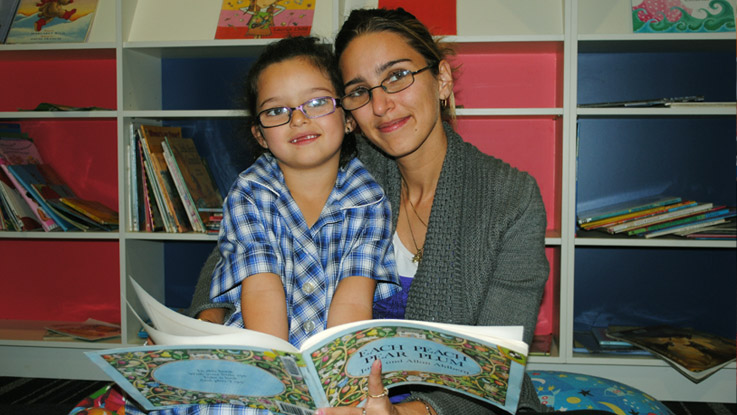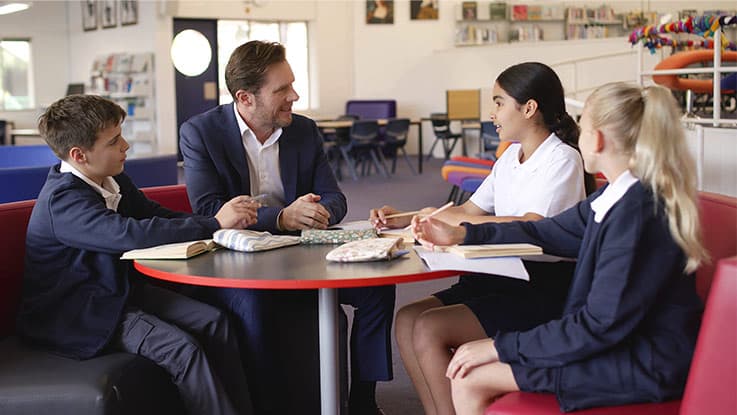The current year 12 class began their schooling in 2012 - a year of great promise for Australian education.
David Gonski's report recommending school reform was on everyone's lips, and expectations were high.
Yet, as these graduating students prepare to walk out the school gates for the last time, Gonski's vision remains unrealised.
The goal was to ensure that every student had the opportunity to succeed at school, regardless of their background. But this has not been the reality for the current generation. The question now is, can we make it so for the next?
Earlier this week, and easily missed in the flurry of activity at the end of the parliamentary year, we took one promising, significant step forward.
Late on Tuesday night, the Federal Parliament passed the Better and Fairer Schools legislation to increase its funding for public schools, turning the current 20 per cent ceiling on the Commonwealth contribution into a floor - the minimum it will provide going forward.
The final percentage a state or territory receives is set out in individual agreements. The Commonwealth has already finalised funding arrangements with the ACT, Northern Territory, Tasmania, and Western Australia.
But it has yet to reach arrangements with the remainder, where most of Australia's young people go to school. I plead with education leaders to urgently find consensus so students in these areas don't miss out.
While the amount of funding matters, how the dollars are spent is just as important.
The goal of the Gonski reforms was to level the educational playing field, ensuring students experiencing disadvantage - whether due to a disability, socioeconomic status, Aboriginal and Torres Strait Islander background, or geographical location - could thrive at school.
Right now, 80 per cent of students who are disadvantaged go to public schools. This means their teachers are dealing with more students with complex needs. At the same time, these students are concentrated in already under-resourced schools.
The new Better and Fairer Schools Agreement, which sits alongside the funding arrangements, lays out the nuts and bolts of much-needed educational reforms.
It emphasises equity and excellence while prioritising student achievement, wellbeing, and engagement. It introduces tiered, targeted support, evidence-based solutions, and ensures the better use of data to drive continuous improvement, alongside strategies to build a strong and sustainable workforce.
The agreement commits to transparency and annual progress reporting to Parliament. This much-needed accountability will help us gauge the effectiveness of interventions and learn what's working - and what's not - in tackling inequity.
Through our evidence-based programs, which help tens of thousands of students, we've seen how the learning gap can be bridged with the right support at the right time.
The Better and Fairer School Agreements also set targets for 2030 that are rightly ambitious. To achieve them, it will take our collective efforts, additional resources, and evidence-based approaches.
These targets include reducing by 10 per cent the number of students who need additional support in reading and numeracy. They also aim to increase school attendance to 91.4 per cent and boost the year 12 (or equivalent) completion rate to 83.8 per cent, recognising the critical role finishing school plays in shaping career prospects and overall quality of life.
If you want proof that an overhaul of our education system is necessary, you only need to look at this year's NAPLAN results.
While one in 10 students nationally are not meeting literacy and numeracy benchmarks, that figure soars to one in three for students from low socio-economic backgrounds. For First Nations students, it's also one in three, and for young people in remote areas, one in four.
There are pockets of excellence in Australian education, and parents, teachers, and schools are doing their best to support young people. However, the reality is that too many of those growing up in hardship do not get the chance to make the most of their schooling.
Starting next January, the Better and Fairer Schools Agreement reforms will begin rolling out - but only in schools across the states and territories that have reached funding arrangements with the Commonwealth.
To those making crucial decisions affecting our young people, my message is clear: we have so much to lose if we fail yet another generation of vulnerable young people. I urge politicians and education leaders across the Commonwealth, and in those states and territories yet to find common ground on funding, to build on the current momentum and not let this chance for change slip away.
When the five and six-year-olds starting school next year finally graduate in 2037, I hope they can look back on a school journey that empowered them to succeed - and that left no one behind, no matter their background.
It's not too late to make Gonski's vision of a fairer, more equitable Australian education system a reality.

